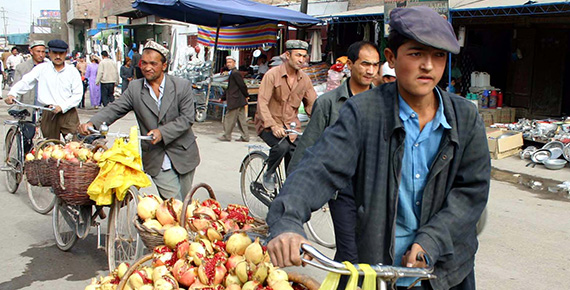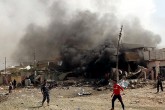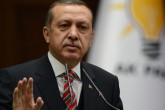The ethnic conflict in East Turkistan, (aka Uyghur Autonomous Region of China) erupted again on Wednesday, leaving 21 dead according to official numbers in Kashgar. Immediately afterward the spokesman for the regional government called the incident a terrorist attack committed by groups that targets stability and development in the area. His statement includes every buzzword that Beijing has kept using to describe the situation in the region, especially since 9/11. Although the information blackout prevents independent sources from getting information about the nature of the incident, these three buzzwords give us some clues about the nature of the incident.
After the deadly 2009 clampdown of Uyghurs in Urumchi, the Uyghur Autonomous Region is once again witnessing ethnic conflict and clashes. The city of Kashgar has been on the spot for the last few years because of Beijing’s policy of “modernization” and “development” in the city within the context of the Western Development Plan. The plan includes eradicating most of the city’s historic downtown and erasing many signs of Uyghur heritage, resulting in further cultural assimilation. Considering the significance of the city for Turkic history and ethnic affinity among the people of Turkey and the region, Turkish Foreign Minister Davutoğlu visited the city a couple of years ago and asked the Chinese government to protect the city’s historical landmarks. However, the recent reports reflected growing Sinicization of the city and increasing levels of poverty and estrangement among Uyghurs. Furthermore, the “development” also brings increasing Han migration to the city and gives them opportunities for employment at the expense of the local Uyghur population, leading a demographic threat. Studies show that the groups, which enjoy the benefits of “development” in most instances, are the newcomers instead of Uyghurs. In several different reports human rights organizations warned of the increasing ethnic restiveness in the region as a result of economic and spatial marginalization of Uyghurs in the city.
Kashgar is far from a unique case. In several different instances, the Beijing government attempted to “modernize” cities without protecting the local people and led to increasing ghettoization of them, destroying the ethnic balance in the region. In part this was a facet of the significant strategy for China to pacify the restive regions in its borderlands, including Tibet and East Turkistan. The paranoia of Balkanization in the 1990s led to Beijing’s harsh ‘strike hard` campaigns to eradicate any form of opposition and dissent activity in the region. The policy also served the Chinese government well in diverting attention from the problems of rapid economic modernization, such as an increasing income gap and high level of corruption, and the question of the state’s legitimacy after the fall of communism in the Soviet Union. The government rallied its people around its flag of creating a “harmonious society” and protecting stability of the country and subsequently named any dissenting activity in the region as separatist, religious fundamentalist, or terrorist. The strike hard campaigns, however, turned out to be counterproductive in most instances. The number of demonstrations increased rapidly in the region and the people became estranged from the Chinese government.
With the independence of Central Asian republics, the increasing internationalization problem pushed China to deny the existence of the problem for the first time. Instead Beijing started to pursue regional cooperation to clamp down on Uyghur activity in Central Asia. Strike hard policies, which were pursued to protect domestic stability and form a “harmonious society” started to be adopted region wide. This time the Uyghur question was represented as a threat to regional stability. It formed one of the founding pillars of the Shanghai Cooperation Organization. At severa



